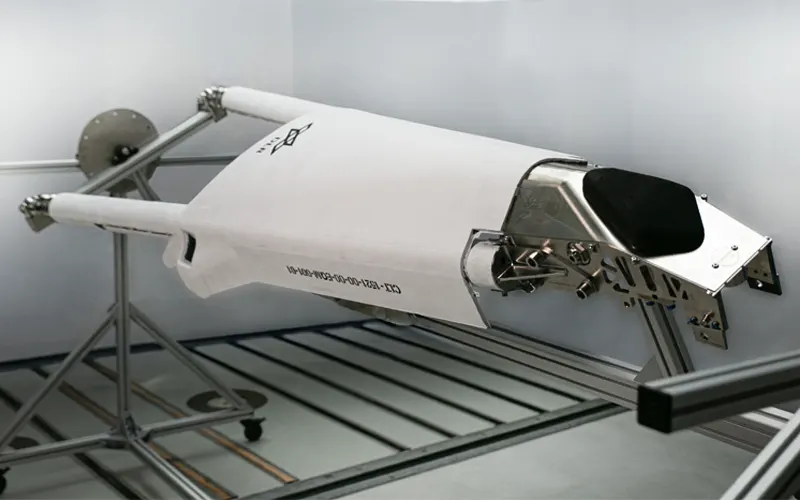 Credit: DLR
Credit: DLR
The DLR Institute of Structures and Design has delivered the qualification model of the Callisto reusable rocket demonstrator’s landing leg to the DLR Institute of Space Systems in Bremen for testing.
Callisto is an international reusable rocket demonstrator jointly developed by DLR, CNES, and JAXA. The project’s primary goal is the development and maturation of key technologies for future reusable launch systems.
The Callisto demonstrator will be equipped with four landing legs designed to absorb the impact of propulsive recovery and keep the rocket upright for successful retrieval. The responsibility for developing the demonstrator’s landing legs was assigned to the DLR Institute of Structures and Design in Stuttgart, which is also in charge of the vehicle’s fairing and aerodynamic control surfaces.
On 9 October, the Institute of Structures and Design announced that it had delivered a qualification model of the demonstrator’s landing leg to the Institute of Space Systems in Bremen. According to a 3 December 2024 update, the leg will now undergo a series of tests at the Institute’s Landing and Mobility Facility, including deployment, touchdown, and vibration testing.
Once the qualification test campaign is complete and the landing leg design has been validated, the Institute of Structures and Design will proceed with the construction of the four flight-ready legs.
The initial low-altitude hop tests of the Callisto demonstrator were expected to take place in 2026 from the Guiana Space Centre in French Guiana. However, in a 12 September call for proposals published by CNES for mechanical operations and procedures support, the agency stated that the full ten-flight test campaign is expected to be carried out in 2027 over a period of eight months.